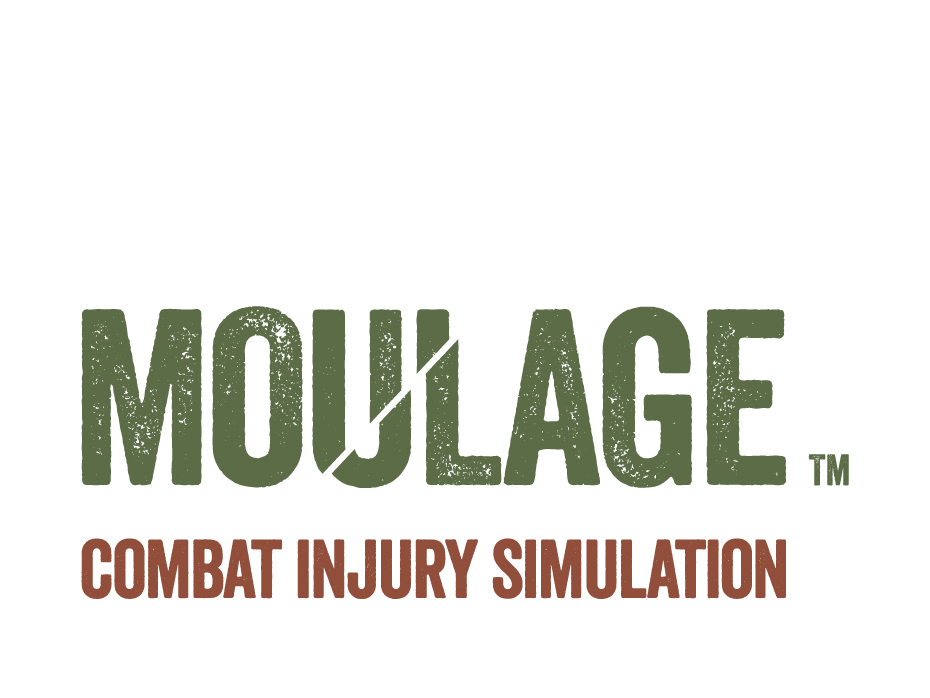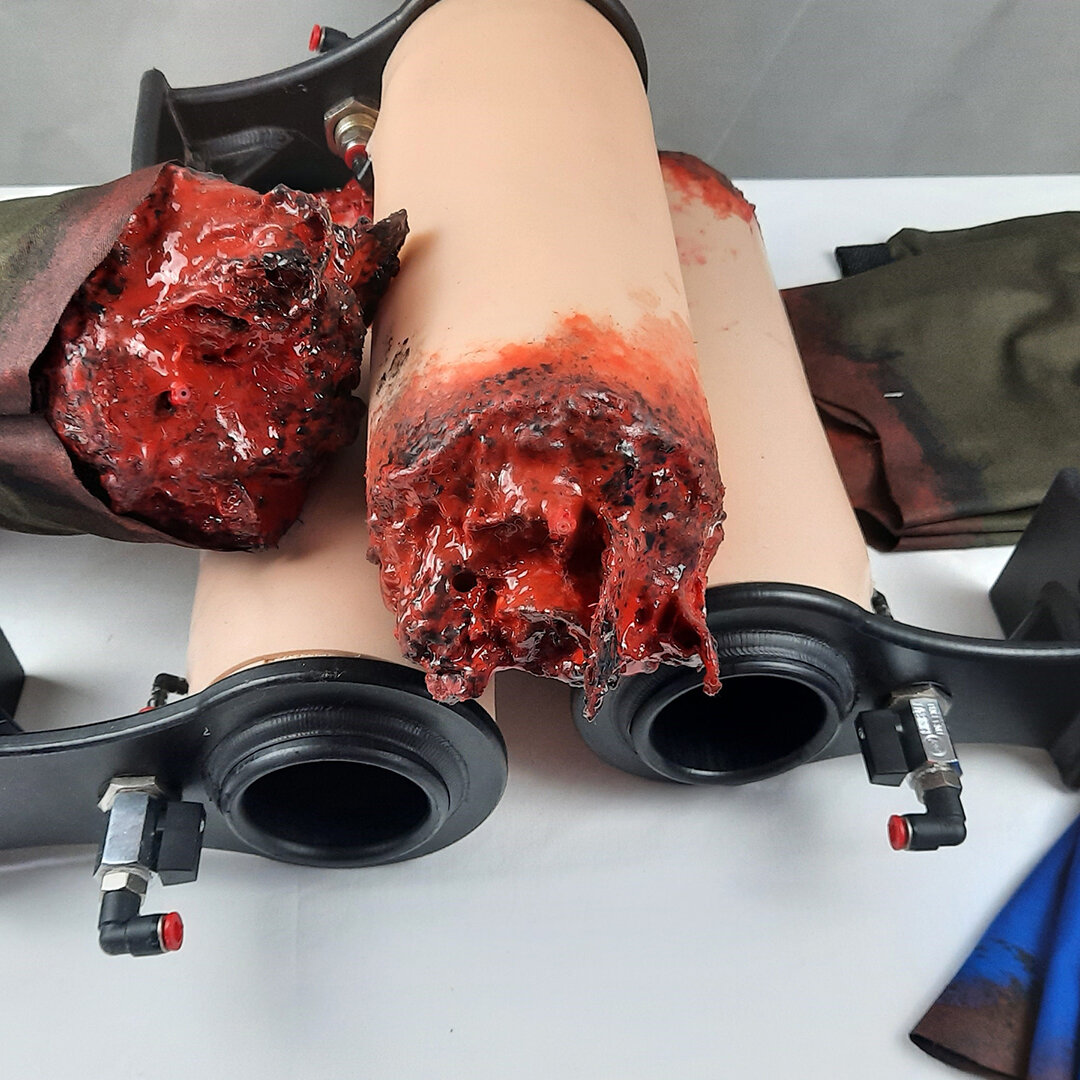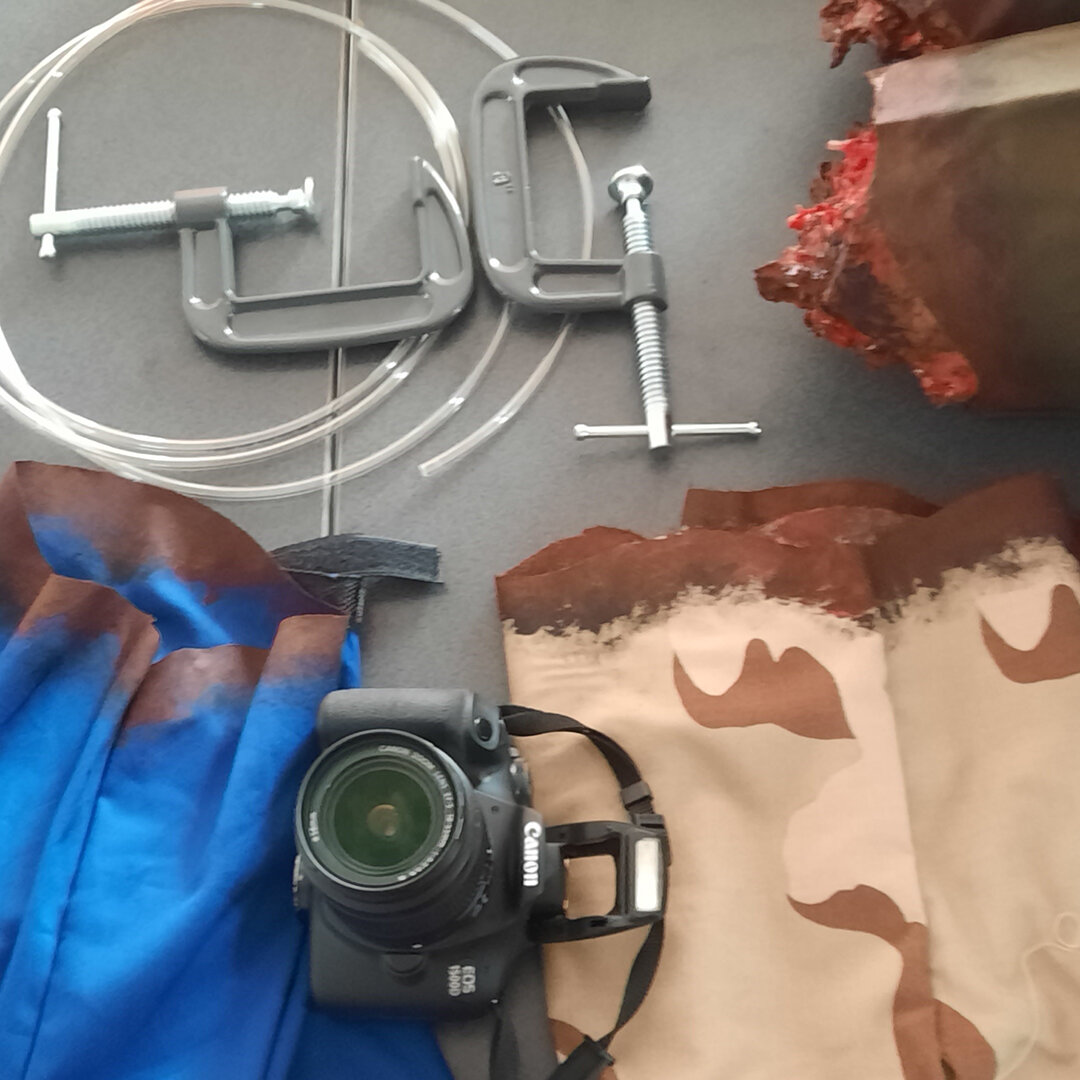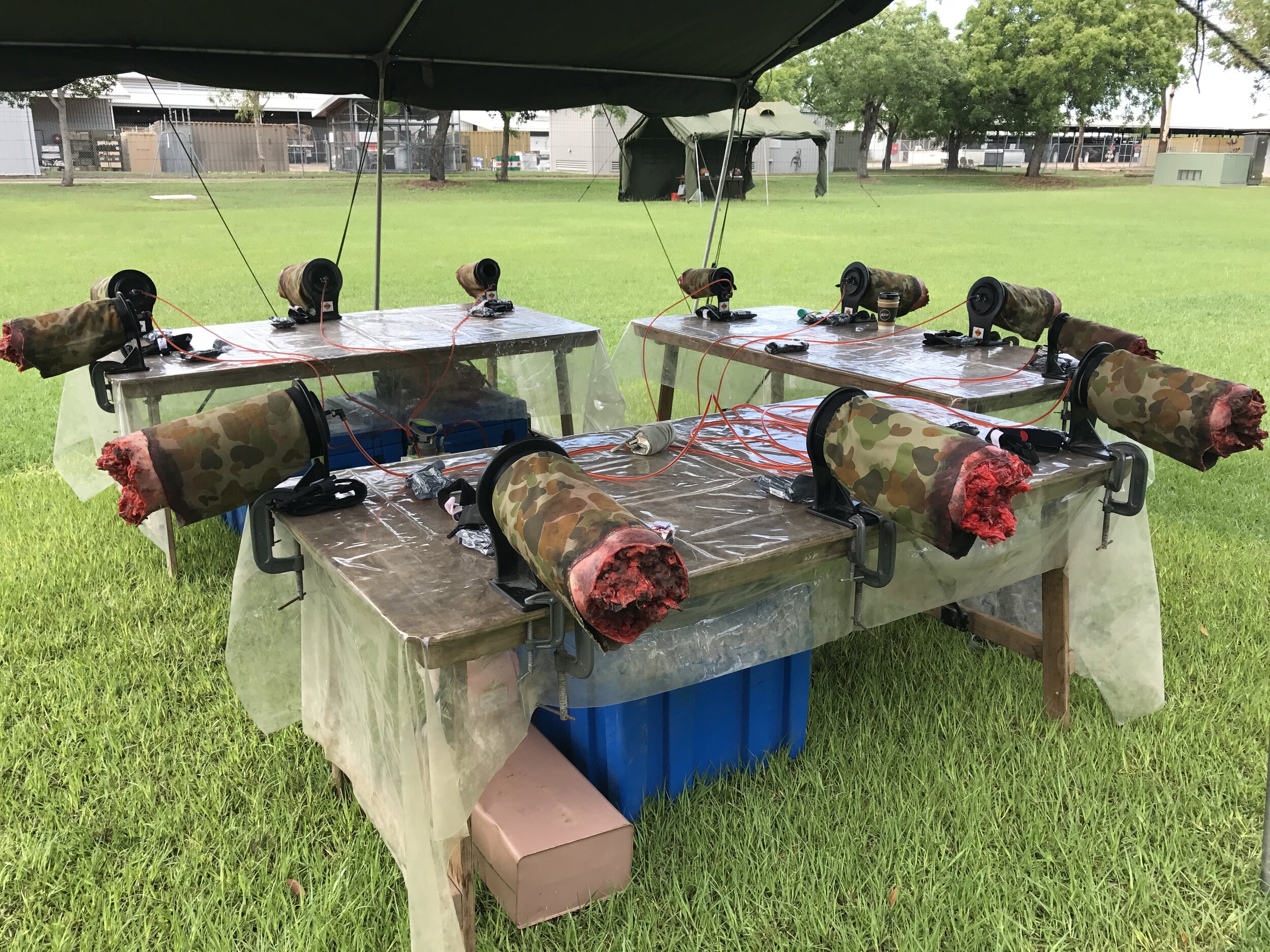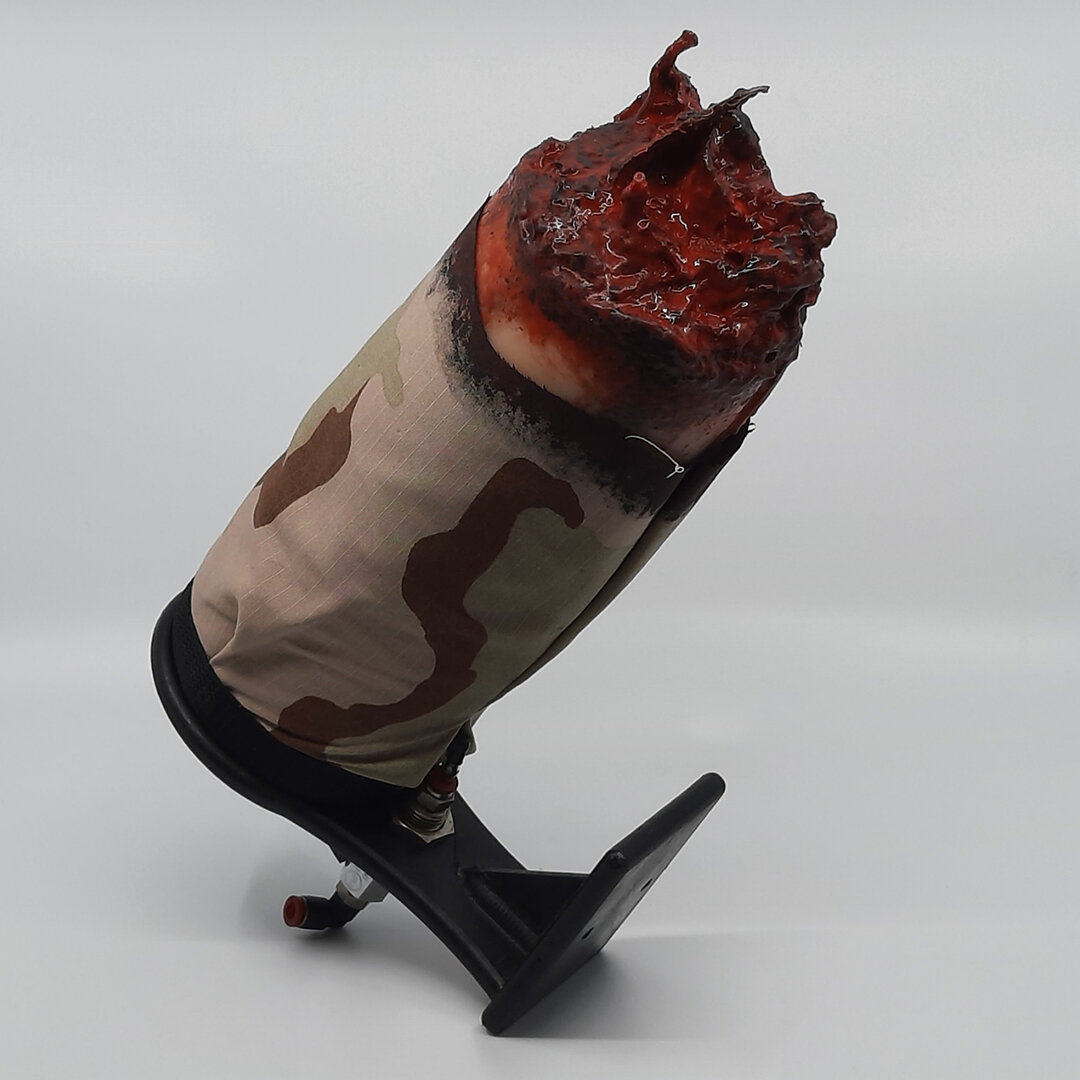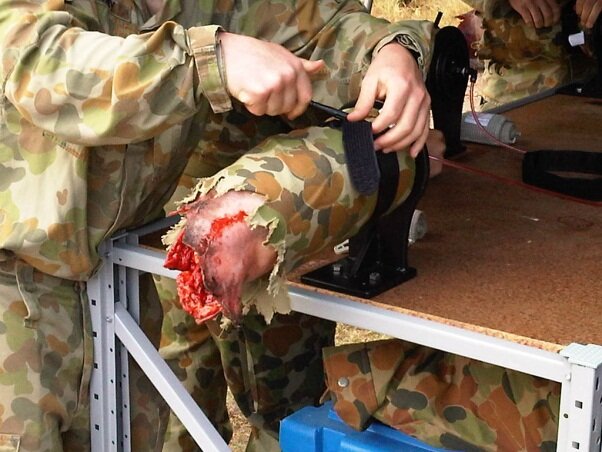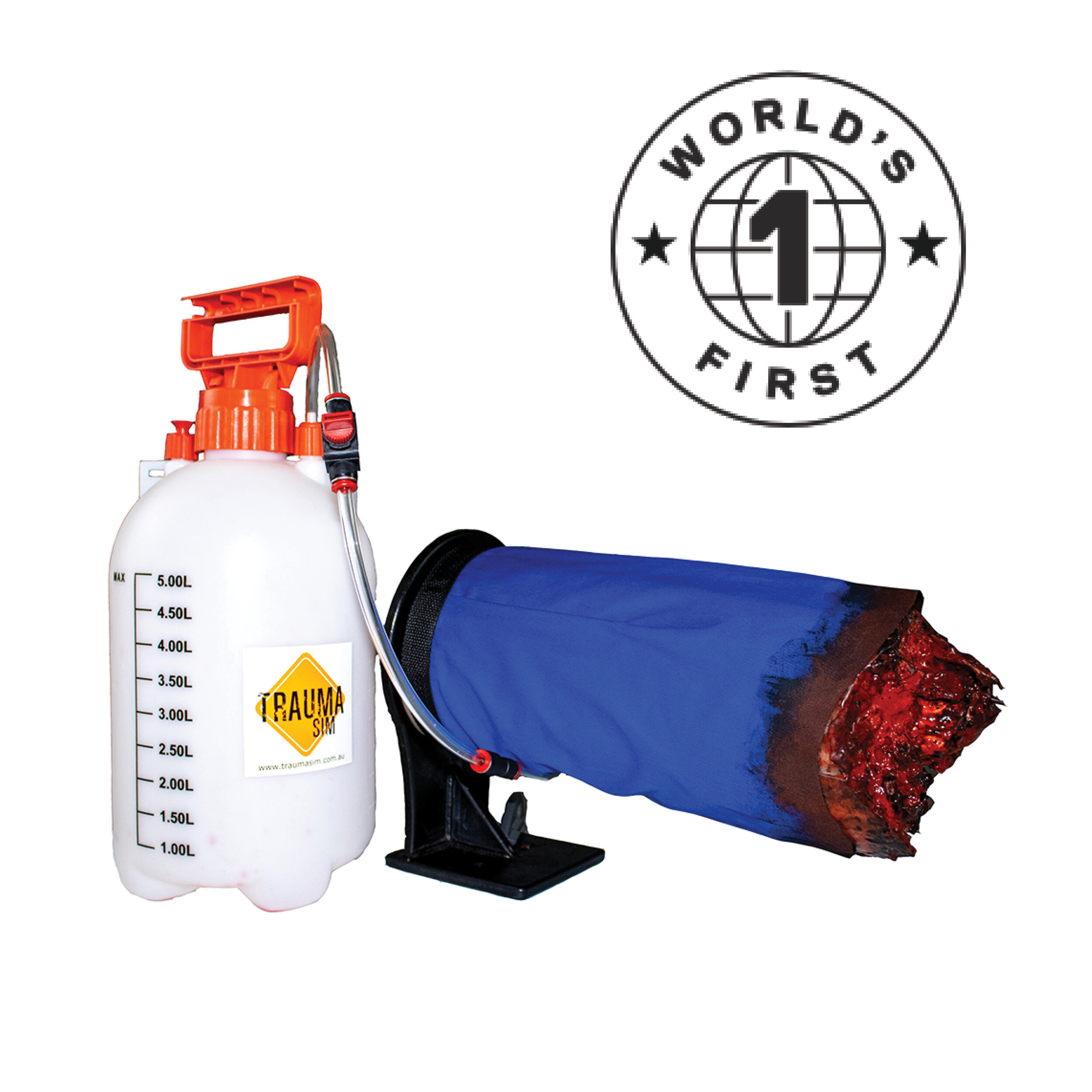The History of the Emergency Tourniquet Trainer
Founded in 2008, the TraumaSim team combined our extensive experience and knowledge of nursing and first aid training to drive a passion for realism in training and to help make a change away from standard PowerPoint presentation style delivery. Initially, the business provided medically accurate moulage (simulated injuries) for first aid and medic training.
Word got out about their services and were soon asked by the Australian Army to provide such services to troops who were preparing for rotations to Afghanistan and Iraq. Soon after, they had a team of moulage artists applying medically accurate wounds and injuries to soldiers and/or role players in extensive simulations and scenarios. The team were proud to be contributing to their soldiers preparedness training, knowing they were making a significant difference via realistic training.
It was during this time that the TraumaSim Group team were fortunate to witness how seriously the military took their training and what it included, such as hemorrhage control, also commonly known as bleeding control. Personnel were provided with arterial tourniquets and hemostatic clotting agents, and used cuts of meat from abattoirs to practice on. Legs of lamb were laid out on tables for tourniquet application and hind quarters of pork or kangaroo, and liters of animal blood, used for wound packing.
The above training was undertaken outside in the full glory of all Australian weather conditions, and simply packed away in fridges at the end of the day to re-use tomorrow. Not a pretty picture is it? And so the team thought, what if we could replace the meat with something synthetic that could do the job? The Lead Trainer was skeptical at first but said he’d look at it if they came up with something so research and development started immediately. The TraumaSim Team knew they could do it and just got stuck into it. After many drawings, research, functionality testing and a bunch of trial & error, they came up with mark 1 of the Emergency Tourniquet Trainer – the first arterial tourniquet training aid in the world.
Replicating either a severed arm or leg, the sturdy base can be clamped to a table and the plumbing allows for controlled blood to flow from a reservoir/pump tank. The outer body is a medical grade silicone, providing a realistic human flesh look and feel. When a tourniquet is applied correctly, the plumbing inside will restrict the flow, ultimately stopping the bleed – allowing students to practice repeatedly in a safe and controlled environment.
The Australian Army loved it and after two years of collaboration, feedback and improvements, these units became the gold standard for their preparedness training activities. Shortly after, the Israel Defence Force had become aware of the product and engaged the TraumaSim team to supply units for their personnel training – becoming their first international sale and export!
From here, awareness grew and the TraumaSim Emergency Tourniquet Trainer is now proudly manufactured in bulk and provided to valued distributors, training partners and customers within Australia around the globe – including America, Italy, Israel, Saudi Arabia, Bahrain and Singapore.
Now available as individual units or in sets of 2 or 4 limbs, and available in 11 different skin colours, it truly is the best arterial tourniquet trainer around!
A background on Tourniquets and their Use
When death can occur within 5 minutes from severe blood loss, the application of a tourniquet can save a life. Whilst the first line of treatment for massive hemorrhage via limb injury has been the application of a tourniquet since World War 1, this practice has been plagued by myths and misinformation over many years, creating a hesitation to include such techniques in civilian first aid training, until more recently.
Previously, it was thought that the application of a tourniquet would be at the detriment of the entire limb affected however, casualties during the conflicts in Afghanistan and Iraq proved this wrong. Since the late 2000s, science around tourniquets and hemostatic clotting has significantly improved, and it is now widely accepted that tourniquet use, wound packing and hemostatic agents provide the best chance of saving lives where pressure alone does not stop the bleed.
In 2012 and 2013, the USA experienced two devastating mass casualty emergencies being the Sandy Hook Elementary School shooting and the Boston Marathon Bombing respectively. A review of the victim’s autopsy records from both traumatic events highlighted that the main cause of death was massive blood loss. This knowledge drove trauma surgeons from the American College of Surgeons to form a group with other experts in the field, government departments and law enforcement personnel to discuss how to improve the rate of survival for people with severe bleeding. And the Hartford Consensus was born!
The primary goal of the Hartford Consensus was to improve national victim survival rates by training everyday civilians in the necessary techniques to apply life saving first aid – empowering bystanders to respond immediately until professional help arrives. Recognizing the value of such a program, the “Stop The Bleed” campaign was launched in 2015 by the White House in America with Australia following suit shortly after.
This new knowledge around tourniquet use, wound packing and hemostatic agents was adopted by various Australian emergency response units who have since developed and implemented Tactical First Aid Training for their personnel. More recently, the Australian Resuscitation Council and Australian Skills Quality Authority have undertaken a review of standard training and now recommend the inclusion of hemorrhage control in Advanced First Aid training with training delivered via the use of practical training aids.
In 2017, the Australian Resuscitation Council updated their guidelines on the management of bleeding as follows:
· If bleeding is severe or life-threatening, controlling the bleeding takes priority over airway and breathing interventions;
· If there is severe, life-threatening bleeding from a limb, not controlled by pressure, apply an arterial tourniquet above the bleeding point, if trained in it’s use and one is available;
· If there is severe, life-threatening bleeding from a wound site not suitable for a tourniquet, or from a limb when a tourniquet is not available or has failed to stop the bleeding, apply a haemostatic dressing, if trained in it’s use and one is available.
In 2020, the Australian Skills Quality Authority that oversees nationally recognised training, updated their curriculum to include compulsory major bleeding control training in the Advanced and Remote First Aid Training packages.
Tragically, another mass casualty emergency in 2017, the Manchester Arena bombing for the Ariana Grande concert, has also highlighted the need for improved training around bleeding control and the appropriate response. The death of 8 year old Saffie-Rose Rousso, was deemed preventable had the correct action been taken however, neither a tourniquet or suitable hemostatic clotting agent were used at any point in the care provided by emergency response.
Training once thought only for the battlefield is now being applied in civilian first aid. Whilst there is still debate amongst the training industry on this inclusion, it is passionately supported by the TraumaSim team who encourage any and all to get trained and save lives!
Link to Hartford Consensus: https://www.facs.org/About-ACS/hartford-consensus
Link to article on Stop The Bleed: https://www.stopthebleed.org/
Link to article on Sandy Hook Massacre: https://www.ncbi.nlm.nih.gov/pmc/articles/PMC5314926/
Link to article on Boston Bombing: https://pubmed.ncbi.nlm.nih.gov/28562290/
Link to article on Manchester Arena Terror Attack: https://www.bbc.com/news/uk-england-manchester-55699002
Link to ARC Guidelines: https://resus.org.au/guidelines/
link to ASQA: https://www.asqa.gov.au/
Link to TraumaSim Part Task Trainer page:https://traumasim.com.au/part-task-trainers/

